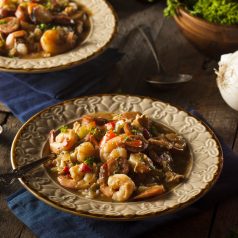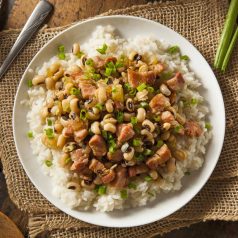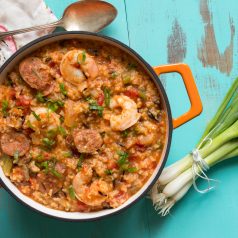
Shrimp and Okra Gumbo
With a heritage claiming both French and West African roots, gumbo is a thick stew served over rice and made with a roux (a mixture of butter and flour) and/or gumbo file powder (made from ground dried sassafras leaves), along with a wide variety of ingredients such as celery, peppers, okra, onions chicken, sausage and/or seafood. With so many options, every family has perfected its own treasured recipes, which leads to an impassioned debate on which one is best. Even so, gumbo does more to bring us together than divide us, as queen of Creole cuisine Chef Leah Chase said, “There’ve been a lot of problems solved in that dining room over a bowl of gumbo.”
Our weekly sale from December 29th – January 4th celebrates the culinary traditions of Kwanzaa (which spans from Dec. 26 to Jan. 1, and New Year’s Eve/New Year’s Day celebrations. You’ll find Henry & Lisa’s shrimp, organic Bionaturae tomatoes, and bulk long-grain white rice featured in the sale, so it’s a perfect time to whip up a batch of this authentic shrimp and okra gumbo from the award-winning Gumbo Shop in New Orleans, Louisiana!


